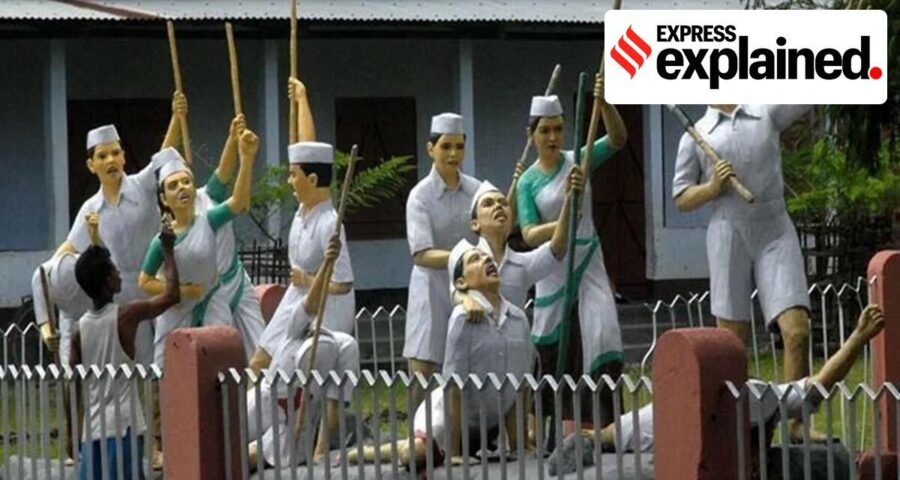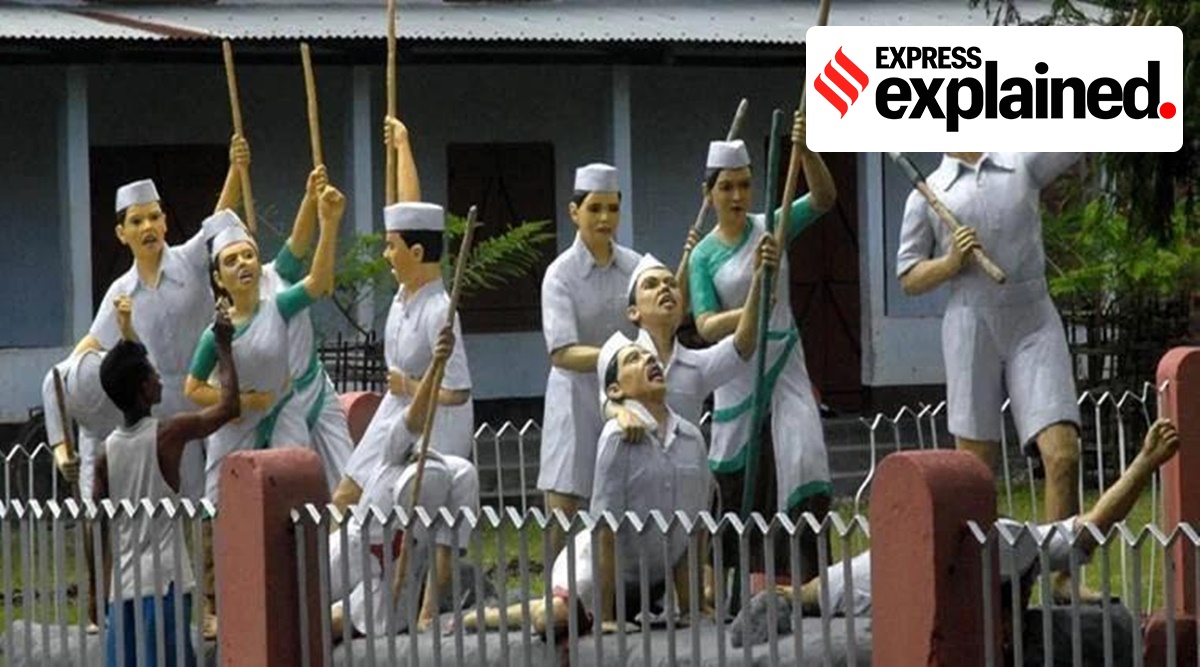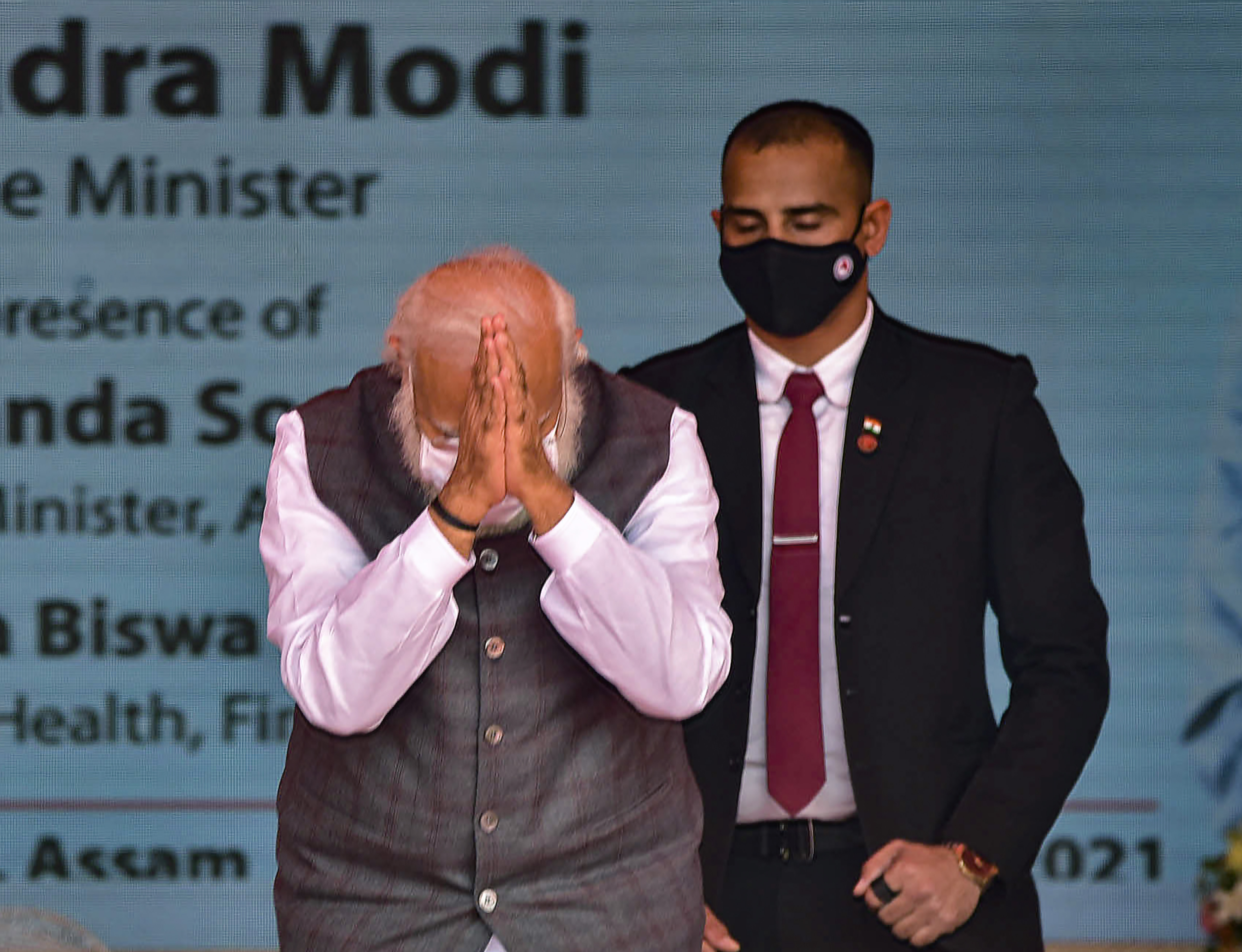Prime Minister Narendra Modi made his second visit in a fortnight to poll-bound Assam on Sunday, and both venues have historical significance.
Prime Minister Narendra Modi made his second visit in a fortnight to poll-bound Assam on Sunday, and both venues have historical significance. The first was Sivasagar’s Jerenga Pothar, where 17th-century Ahom Princess Joymoti sacrificed her life. And on Sunday, Modi was at the historic “martyr” town of Dhekiajuli, associated with the Quit India Movement of 1942, to lay the foundation stone for two medical colleges and launch a road and highway project. “Dhekiajuli is a historic land and a symbol of valour and pride. In 1942, Assam’s freedom fighters laid down their lives…,” the PM said in his speech.
What is Dhekiajuli’s connection to the Quit India movement?
Dhekiajuli was home to possibly the youngest martyr of the Indian freedom struggle. On September 20, 1942, as part of the Quit India movement, processions of freedom fighters marched to various police stations across several towns in Assam. These squads, which were known as ‘Mrityu Bahini’, or death squads, had wide participation — including women and children — and set out to unfurl the tricolour atop police stations, seen as symbols of colonial power.
The British administration came down heavily on them. In Gohpur, 17-year-old Kanaklata Barua and others fell to bullets. And in Dhekiajuli, at least 15 people were shot dead, three of them women, including the 12-year-old Tileswari Barua.
“Monbor Nath, who was leading the squad, was the first to get gunned down,” said Dhekiajuli-based teacher Ramesh Chandra Bora. “He was followed by Kumoli Devi and Mohiram Koch, and after that, the youngest, Tileswari, charged towards the police like a tigress, clad in a mekhela sador, holding the tricolour, before getting shot.” According to Bora, who has for decades documented the history of Dhekiajuli, Tileswari was the youngest martyr of India’s freedom struggle.
Bora said the town comprised primarily farmers and tea plantation workers. “These are the kind of people that participated in the movement,” he said. The 15 who died in the firing included a beggar and an ascetic. “Only the names of 11 are known,” Bora said.
September 20 has for long been observed as Martyrs’ Day in Dhekiajuli town.
How significant was this event?
According to Avinibesh Sharma, who runs Vintage Assam, a website that documents Assam’s history, Assam’s participation in the freedom struggle intensified in the 1940s. “Patriotic fervour was at its peak — and this was also a time when you saw a lot of women coming to the fore and visibly participating in the movement — because till the civil disobedience movement, women’s participation was rather limited,” he said. “But suddenly you had them not just picketing, but leading ‘death squads’, presiding over meetings.”
Barnali Sarma, Associate Professor of History at Gauhati University, noted that historians and scholars often say that before the Assam Agitation (1979-85), it was only the Quit India Movement that saw mass participation of women. “You had Kanaklata Barua, Pushpalata Das, Tileswari Barua — who all became inspiring icons,” she said.
Bora said this was a time when a number of children too, swept by emotion, despite their parents’ concerns, joined the freedom struggle. “Even Tileswari, inspired by the fiery speeches she would hear in Congress meetings in her village, Nij-Borgaon on the outskirts of Dhekiajuli town, felt that she must do something for her country,” Bora said.
How has the episode been commemorated so far?
It is sometimes said that Tileswari’s supreme sacrifice has been forgotten. Dwijendra Mohan Sharma of the All Assam Freedom Fighters’ Association said that so far no one paid the attention this event deserved, but with their effort awareness is slowly on the rise. A martyr’s memorial was erected in 1975, and two recent books have been written. Recently, the Dhekiajuli police station was accorded heritage status and restored by the Assam government.
Source: Read Full Article





